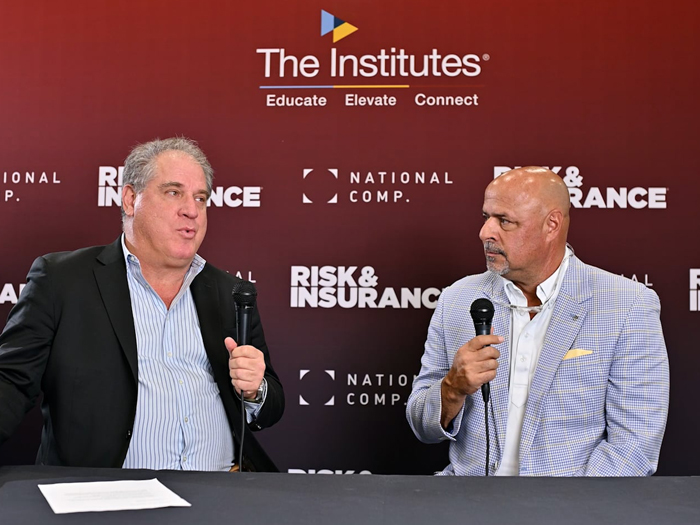Fix Now, Invest in the Future: Biden’s Infrastructure Bill and How It Will Impact Risk Management Efforts

Despite the economic uncertainty of the moment, freshly paved roads, new bridges and access to high-speed internet could soon be on the way to millions of Americans. With $550 billion of new federal funding on the horizon as part of the Infrastructure Investment and Jobs Act, state and local governments may soon be able to green light projects that have long been on hold.
The American Society of Civil Engineers has rated the nation’s infrastructure at a C minus level. Given the steadily deteriorating roads, bridges and waterways around the country, the National Governors Association has urged Congress to fix what needs to be fixed now and invest in the future.
With $110 billion slated for roads, bridges and other transportation related infrastructure, and the Biden administration calling for this to be an “infrastructure decade that will transform America,” the current package has the potential to go farther than the $48 billion spent on transportation as part of the 2009 American Recovery and Reinvestment Act.
As state and local governments navigate their way through the effects of the delta variant and a summer of climate emergencies, Kathleen Crowe, a 2021 Public Sector Power Broker® anticipates that longevity and climate resiliency will be key factors that public sector owners will be thoroughly incorporating into their planning of mega infrastructure projects.
“It’s really important to think about the longevity of [a] structure not just the significant cost of creating or building it, but what’s the longevity associated with this massive piece of infrastructure,” Crowe said.
Navigating supply chain disruptions
Assessing the integrity of project materials will be essential in mitigating risk in Crowe’s estimation.
“One of the things that we’ve seen more recently is the absolute crumbling of our supply chain for key materials,” she said.
From a risk management perspective, Crowe encourages a greater emphasis on ensuring that materials received are legitimate.
“It feels like there’s such a shortage of everything now that people are trying to cut corners to get materials faster,” Crowe added.
“Part of what we’re focused on from a risk management perspective is ensuring that the correct materials are being used for the right job.”
Avoiding litigation by choosing a collaborative model
Timing for the rollout of much needed infrastructure projects around the country will be crucial to bumping up the nation’s infrastructure grade over the next decade.
Even for states and municipalities with “shovel-ready” projects, the earliest new infrastructure funding is expected to be available may be late 2022 and into 2023, if the flow of 2009 recovery support can be used as an indicator of the speed at which infrastructure money moves through government.
Travelers’ chief underwriting officer for construction surety, Stan Halliday, sees this as an opportune time for public sector owners to consider the procurement method utilized when planning their long-awaited heavy civil infrastructure projects.
Basing his expectations on the recent study completed by Travelers evaluating the outcomes of 224 mega civil infrastructure projects from 2004 to 2020, Halliday anticipates that fewer claims will be filed, money will be saved on litigation, and projects have a greater chance of finishing on time if public sector owners adopt a collaborative approach to planning and working with contractors rather than prioritizing the lowest bid.
The Travelers study found that “the Design-Bid-Build procurement method has produced much better results for contractors than Design Build procurements, with more than 75% of those projects earning expected returns.”
Heavy civil infrastructure projects that use a design-bid-build method such as the construction management/general contractor (CMGC) approach, or a progressive design build style, in Halliday’s estimation, could yield cost savings and overall better results for state and local governments, contractors and taxpayers alike.
As Crowe notes, of utmost importance is making sure that funding is “spent in the most fiscally responsible way.”
Choosing management wisely
Regardless of the procurement method chosen, management of heavy civil infrastructure is going to be key.
The infrastructure boost promises to make way for up to 2 million new jobs. Crowe points out that with a surge in construction related jobs, investment in administrative oversight will be important to be sure that wage regulations such as those outlined in the Davis Bacon Act are upheld.
Even with a potential for an uptick in employment, Halliday points out that many state and local governments are understaffed and rely on third party consultants and firms more than ever.
He raises the question, “Are there enough people on the owner side to manage projects and manage them well?”
Preparing for broadband and enhanced cybersecurity
In the arena of technology and cybersecurity, the largest block of funding, a proposed $65 billion, will be used to bring high-speed internet access to underserved communities around the nation. For Dean Johnson, senior executive government advisor for Ensono, the investment in broadband will be a game-changer for state and local governments who have been focused on bolstering internet connectivity in their communities for quite some time.
Johnson also expects that the $1 billion slated for cybersecurity will especially help small city and county governments that currently do not have the funds “to provide either adequate infrastructure and or security” to stave off ransomware attacks and other threats that are steadily on the rise.
Like Crowe and Halliday, Johnson expects that informed management will be imperative in the execution of cybersecurity infrastructure projects. He anticipates that state and local governments will prioritize conducting security assessments to evaluate their current cybersecurity programs, and thereafter utilize new infrastructure funding to close the gaps.
Having thorough assessments will ensure that money is not spent for the sake of spending. Instead, Johnson says, public sector managers can look more closely at “what’s the business problem I’m trying to solve,” and then “[match] up [the] technology to meet their business needs.”
For the many local governments that “don’t even have a security program, and don’t really understand what the next step should be,” Johnson says seeking the support of a third-party infrastructure security officer (ISO) may better position local government to “even be able to write up a justification to pull down federal funds.”
An ISO as a service or a resource through a larger service, could enable local governments to fill out paperwork properly and ultimately acquire the infrastructure funding need to pay for much needed cybersecurity solutions.










